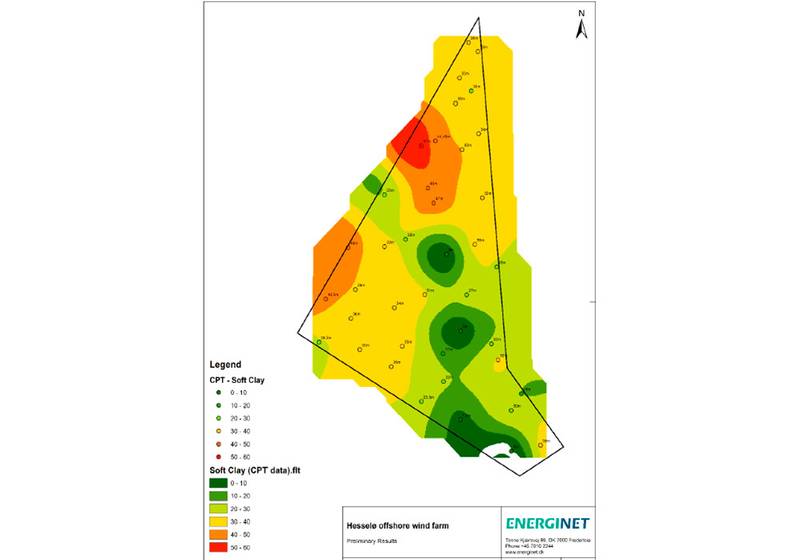
Danish Energy Agency has put on hold the tender for the 800MW-1,200MW Hesselø offshore wind farm, citing the need to further analyze the results of the preliminary site investigation, as soft clay formations have been found in the upper 20-30 meters below the seabed.
"This decision is due to the preliminary site investigations having revealed soft clay formations, especially the upper 20-30 m below the seabed, in large parts of the area selected for the [offshore wind farm ]. The results appear to indicate less favorable site conditions than initially specified in the fine screening report, which may cause technical challenges in relation to the installation," the agency said Friday.
"Currently, external consultants are conducting further laboratory analyses to fully assess the strength properties of the top soil in the area. These analyses are expected to be concluded in the fall of 2021 after which the DEA intends to initiate a new market dialogue to discuss the consequences of the results with the market players," DEA said.
Following the results of market dialogue and analyses, all input will be considered and the further tender process will be decided, the agency added. The preliminary site investigations are conducted by the Danish TSO, Energinet. The map illustrates the estimated thickness of the soft clay based on preliminary data from 40 Cone Penetration Tests conducted within the 247km2 area. The colored map thus represents one of many gridded surfaces that fits the gathered data and the actual clay thickness may therefore deviate from the map illustration - Credit: DEA
The preliminary site investigations are conducted by the Danish TSO, Energinet. The map illustrates the estimated thickness of the soft clay based on preliminary data from 40 Cone Penetration Tests conducted within the 247km2 area. The colored map thus represents one of many gridded surfaces that fits the gathered data and the actual clay thickness may therefore deviate from the map illustration - Credit: DEA
Also, the Danish Energy Agency on Thursday published the final tender conditions for the tendering of Thor Offshore Wind Farm, which will be the country's largest.
"With the publication, all the basic elements of the tender are in place, and the bidders now have four months to prepare their final bid for the offshore wind farm," the DEA said.
Thor Offshore Wind Farm is the first of the three offshore wind farms decided as part of the Energy Agreement from 2018. Thor will be the largest offshore wind farm in Denmark and will be established at least 22 km off the coast at Thorsminde on Jutland's west coast
The offshore wind farm is tendered with the flexibility of 800-1000 MW. In addition, the grid connection from the wind farm to the shore is included in the tender.
Thor will be able to supply power to approximately one million Danish households. For comparison, Kriegers Flak, which is currently the country's largest wind farm, will have a production capacity of 604 MW and will be able to cover the annual electricity consumption of around. 600,000 Danish households.